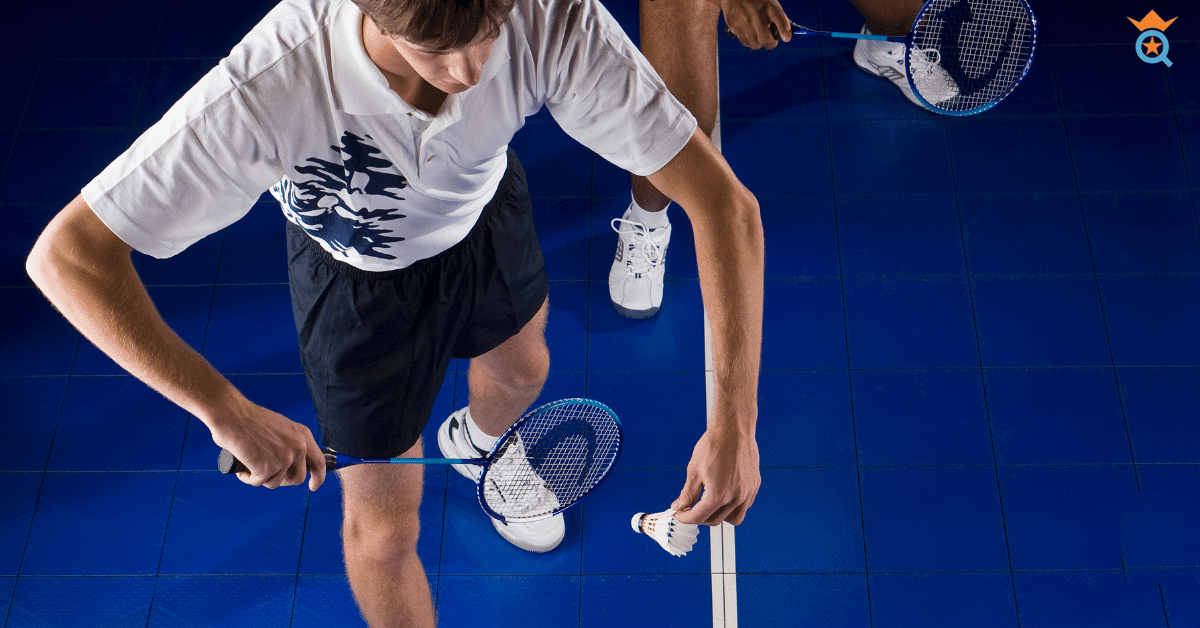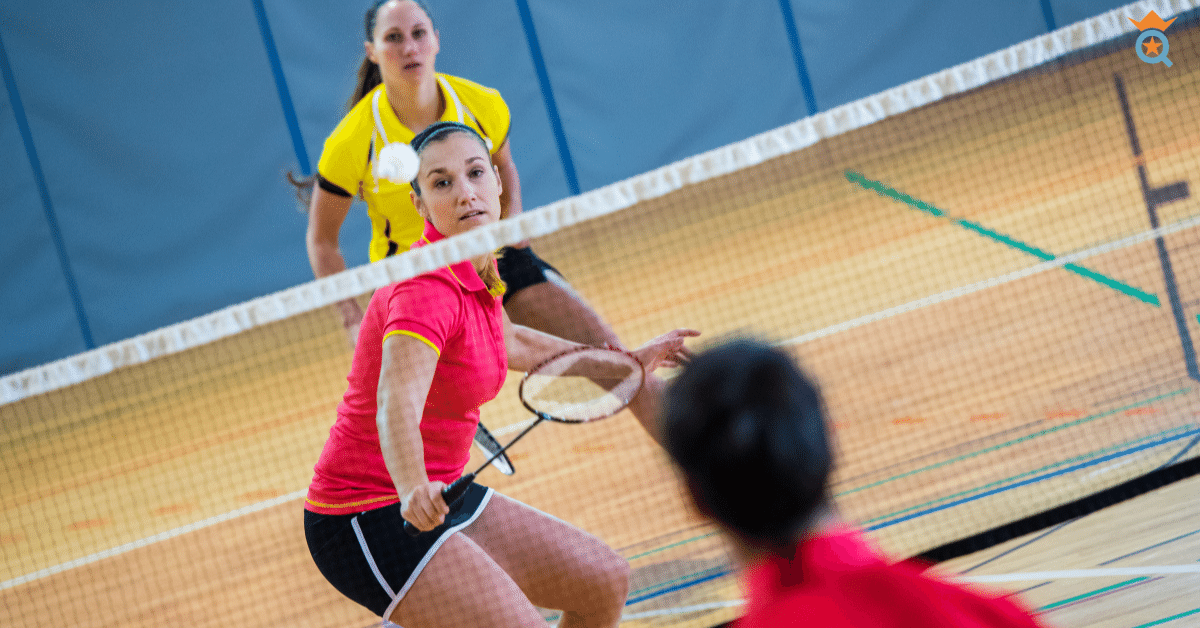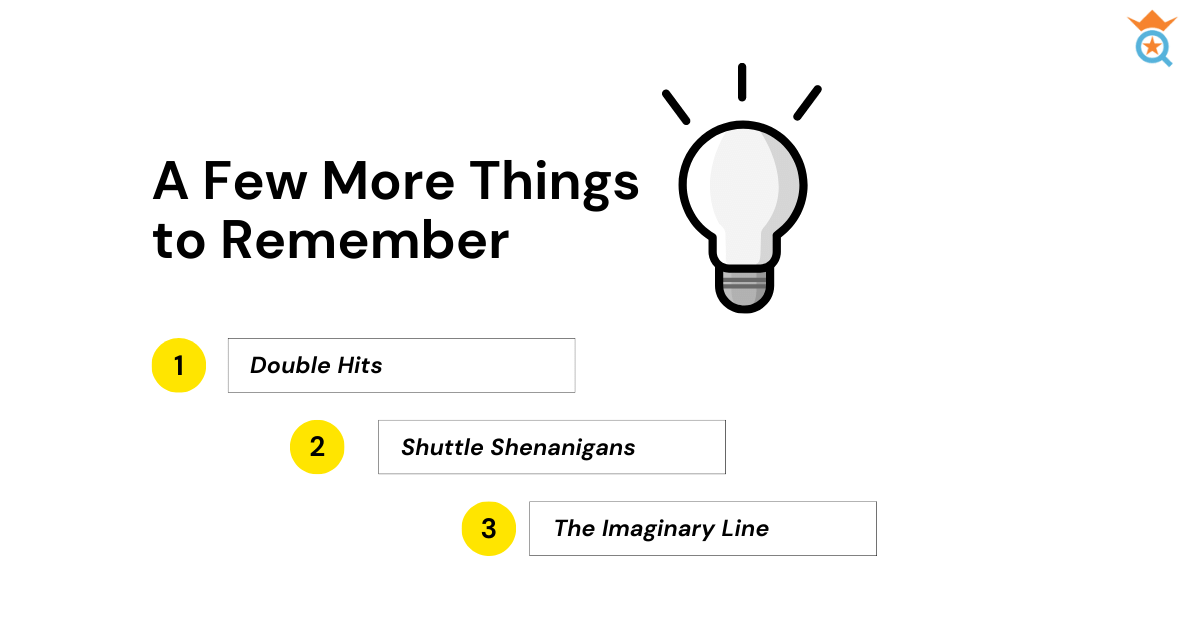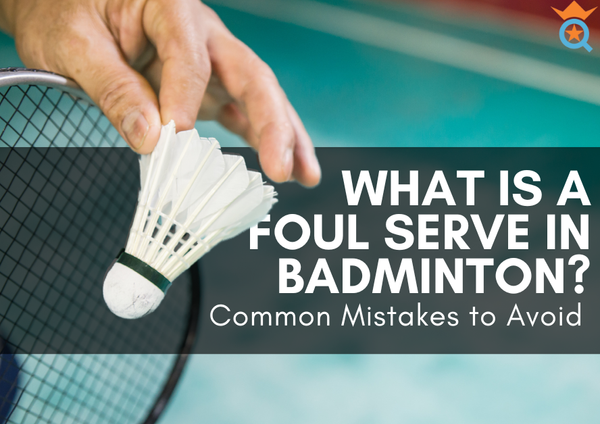Alright, fellow badminton enthusiasts! Get ready to dive deep into the fascinating, high-paced universe of badminton. Today's million-dollar question: "What is service fault in badminton?"
Before you start twirling your rackets and aiming to hit the shuttle, let's explore the lesser-known areas of the game. After all, knowledge is power, right?

Service Faults
Ah, the thrill of the game, the excitement of delivering a service, and the suspense that comes with it. You might be asking, "Why the suspense?" Well, my friends, it's because of the notorious service faults. These little party crashers often pop up when you're about to perform a low serve, ready to turn the tables of the game.
But don't let this dampen your spirit. Service faults might sound like a real menace, especially in a doubles game. You know, when you're trying so hard to make the serve pass right above the net. It's like threading a needle from a distance, more so for those of us who aren't exactly towering in height.
Before you start fretting, remember, every problem comes with a solution. And in this case, it lies in the sacred text of the Badminton World Federation's service rules. Now, these might look like a complicated puzzle, but hey, we've got your back! We're here to translate the gibberish and give you the lowdown on avoiding service faults.

The Basics of a Service Fault
In essence, a service fault in badminton arises when any of the game's serving rules are violated. When it comes to delays, the umpire typically gives a warning before calling a fault. For every other rule, breaking it is an immediate fault. So, let's try to understand these rules.
When the Service Begins and Ends
A serve commences with the first forward swing of the server's racket head, marking the start of the service. Delivery of the service happens when the server's racket hits the shuttle, or in case of a miss, when an attempted service takes place.
Avoiding Delays in Service
A cardinal rule in badminton is that neither the server nor the receiver should cause undue delays once they are ready for service. Post the backward swing of the server's racket head, any delay in the service's initiation is considered undue. If you're wondering how long qualifies as an "undue delay," it's essentially down to the umpire's discretion.
As a general guideline, a delay of more than five seconds could be considered excessive. Furthermore, pausing between backswing and forward swing is not permissible, and neither is an extremely slow serving action.
Serving and Receiving Positions
Both the server and the receiver are required to stand within their respective diagonally opposite service courts, without touching the boundary lines of these courts.
The Need for Steady Footwork
From the start of the service until its delivery, some parts of both feet of the server and the receiver should maintain contact with the court surface in a stationary position. This rule permits weight shifting and even body rotation, but dragging a foot along the floor is a clear violation.
Proper Shuttle Contact
When serving, the server's racket should initially hit the base of the shuttle. The entire shuttle needs to be below an imaginary line around the body, level with the lowest part of the server's bottom rib, at the time it is hit by the server's racket.
Racket Direction
When hitting the shuttle, the server's racket shaft should point in a downward direction. This rule helps prevent heavy topspin on drive serves, which makes them very difficult to attack.
Forward Racket Movement
The server's racket movement should continue forwards from the start of the service until the service is delivered. In essence, the service action should be one continuous movement with no double-action feints.
Where to Serve
The shuttle should ascend from the server's racket and pass over the net so that, if it's not intercepted, it will land in the receiver's service court, i.e., on or within the boundary lines. Any serves that fall outside the boundary lines are service faults.
No Mulligans Allowed
If a server misses the shuttle during an attempted serve, it's an automatic loss of the rally. Unlike in tennis, there are no second serves in badminton.

The Technicalities of Serving
Alright, let's delve into the technical side of things. Picture yourself on the badminton court. You're gripped with excitement, your heart pounding, and it's your turn to serve. Remember the golden rules? Good! Now, here's what else you need to know.
Firstly, position matters. If you're stationed on the left side of your service court, your service should make a beeline for the right side of your opponent's court. It's like sending the shuttle on a little vacation to the diagonally opposite service court. Failure to do so, and you've committed a service fault. Bummer!
In the game of badminton, time isn't just money—it's points! Avoid any undue delay in serving. It's like being fashionably late; it might work at parties, but on the badminton court, it's a big no-no.
Another thing to remember is to swing at the shuttle only once when serving. A double hit, while sounding cool, is actually a service fault. Also, try to keep your feet grounded.
If it looks like you're about to start a hopscotch game while serving, you've got a service fault on your hands.

What's a Receiver's Fault?
In our little badminton adventure so far, we've spent quite a bit of time talking about the server, their duties, and the daunting service faults they must avoid. But let's shift the spotlight for a moment. Did you know the receiver also plays a vital role and can be subjected to faults? Yes, you heard right! Let's deep-dive into the nuances of receiver faults in badminton.
Imagine this. The server's eyes are locked on the shuttle; their heartbeat resonates with the anticipatory hush of the court. Suddenly, the shuttle is released with a swift flick of the wrist, soaring toward the receiver's service court. But, wait! The receiver, in their eagerness, steps over the boundary lines of their service court even before the shuttle has been hit by the server. Oops! This little misstep is known as a receiver fault.
You may think, "That's a bit strict, isn't it?" But alas, the rules of badminton, as in life, must be respected. The receiver must maintain their composure and remain within their service court until the server has hit the shuttle. So to all those receivers who get a little too excited, remember to keep your feet planted until that shuttle is in the air!
However, staying still doesn't mean becoming a statue. As a receiver, you must be alert and ready to spring into action as soon as the shuttle is hit. Any forward or backward movement, even a hint of it before the start of the service, is a strict no-no.
Stay still, but stay focused, and only move once the shuttle has been served. It might seem like a game of 'Red Light, Green Light', but hey, who doesn't love a good challenge?

A Few More Things to Remember
When you're playing badminton, keep an eye out for these other common faults as well:
- Double Hits: This isn't tennis, folks! In badminton, if the shuttle hits the racket twice or if it's hit successively by the same player or the player's partner, that's considered a fault.
- Shuttle Shenanigans: If the shuttle ends up spinning wildly or doesn't cross the net after being hit, that's also a fault.
- The Imaginary Line: Remember, in doubles, there's an imaginary line around the court that the server and receiver can't cross before the service is delivered.
Remembering these rules can seem like a handful, but don't worry. With time and practice, it'll become second nature.

Let's Talk Terms
Before we dive in, it's crucial to be clear on a few terms related to serving in badminton:
- The "start of the service" refers to the initial forward movement of the server's racket head.
- The "delivery" of the service occurs when the server hits the shuttle, or even if the server misses the shuttle while trying to serve.
Understanding these terms will help us to decode the badminton service rules laid out by the Badminton World Federation.

Wrap-Up and Parting Shots
So there you have it! We've navigated the intricate maze of the service rules, looked at what a service fault in badminton is, and even sprinkled in some tips to avoid them.
As you prepare to hit the court, keep these rules in mind. But don't forget the most important rule—have fun! After all, it's not just about playing badminton; it's about enjoying the game. So, lace up, warm up, and serve it like a pro!
Frequently Ask Questions
What is a service fault too high in badminton?
Great question! In badminton, a service fault too high refers to a situation where the shuttle is hit above the server's waist during the service. This waist-level boundary is determined by an imaginary line around the server's waist, defined as the lowest rib bone. This service rule, governed by the Badminton World Federation, is in place to keep the service fair and consistent for all players.
How many service fault signs are there in badminton?
Well, in an international tournament, there are 13 service fault signs used by a service judge to communicate the specific nature of the fault. These include faults like the racket head not pointing in a downward direction, the shuttle initially hitting too high, the shuttle landing outside the boundary lines of the opponent's court, and more. Understanding these signals can help you refine your serve, avoid common faults, and maybe even give you an edge over your opponents!
What happens after a badminton service foul is made?
Whenever a service fault is made, the shuttle's journey ends right there. It's a bit like hitting a red light. The serving side loses their turn, and the opposing server gets to serve next. Service faults can change the tide of the game quickly, so it's always wise to ensure your serve follows all the necessary rules.
Is it a fault to fake a serve in badminton?
Yes, it is! Badminton isn't a fan of deception. Faking a service, making any deliberate attempts to deceive the opponent with your service, or even undue delay in delivering your service constitutes a fault. When the server's racket swings forward, it's expected to make contact with the shuttle, initiating the rally. Any first forward movement that doesn't result in the shuttle being hit is considered a fault.
Can a shuttle spin wildly in a legal stroke?
In badminton, if a shuttle spins wildly and unpredictably after being hit, it's usually due to a double hit or a fault called a 'thrown' shuttle, which is not allowed. The shuttle must be hit cleanly and must not come to rest on the racket.








